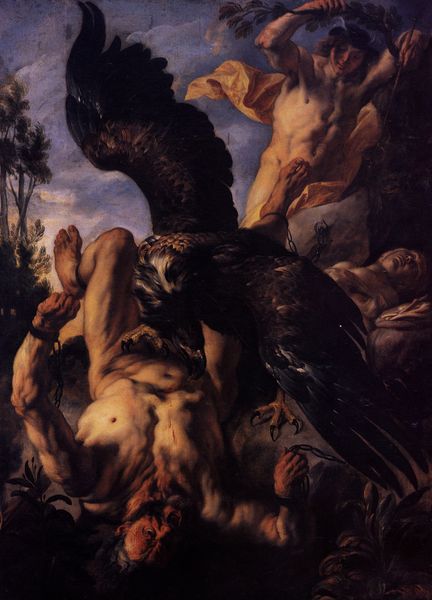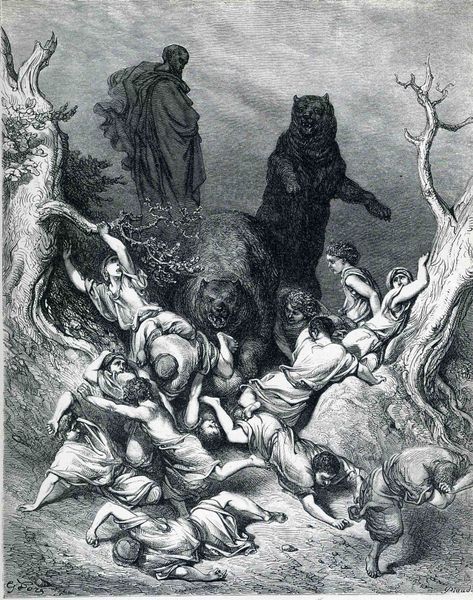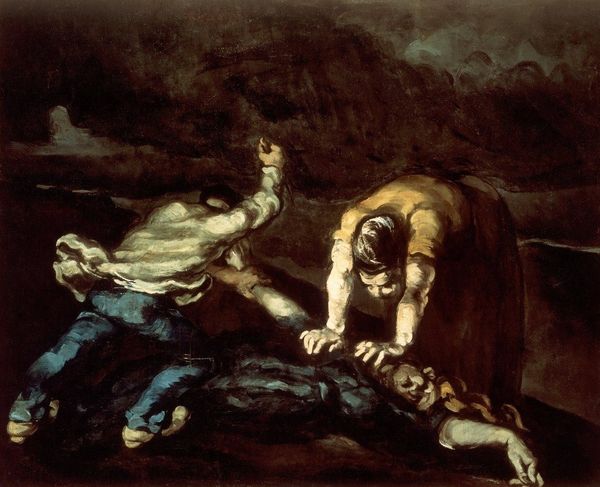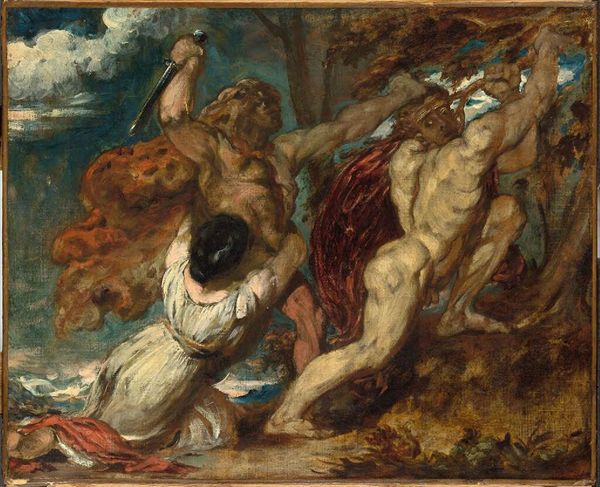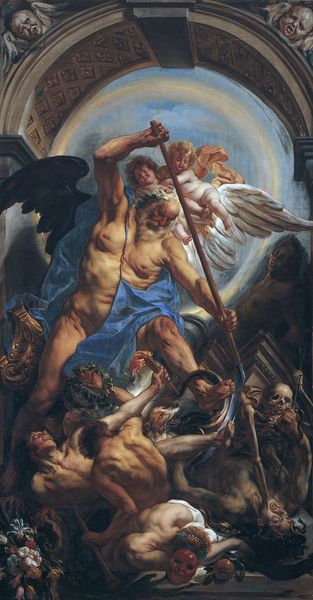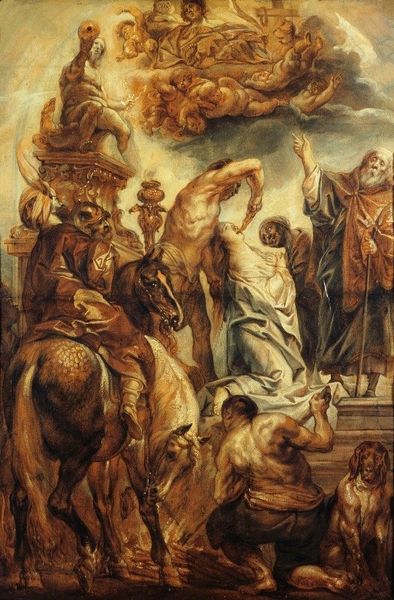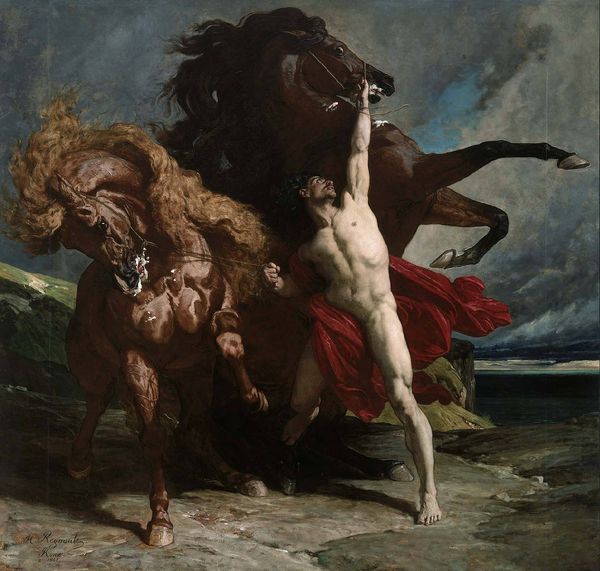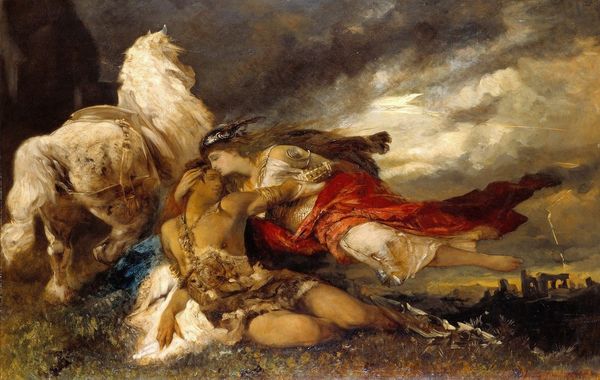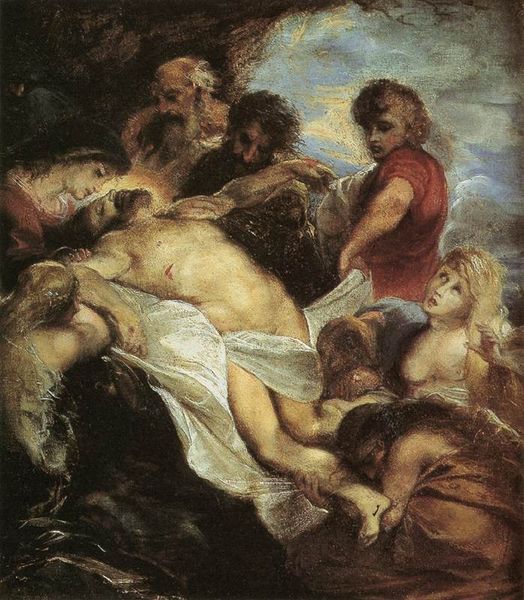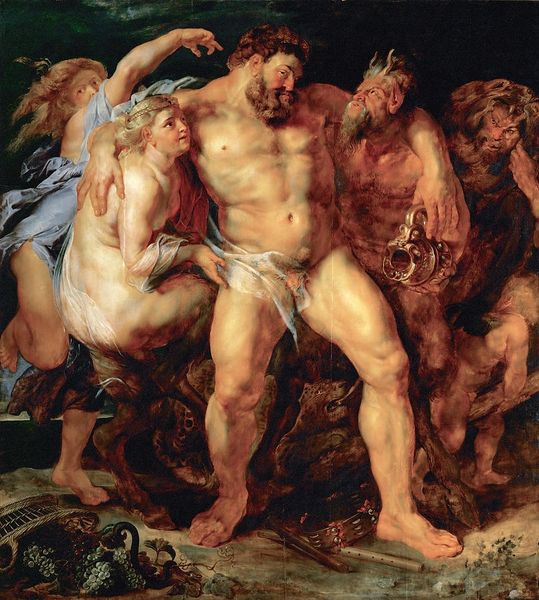
Copyright: Public Domain: Artvee
Editor: So this is Hans Makart's "Dante and Virgil in the Inferno," painted sometime between 1863 and 1865 using oil paints. The tumultuous figures really strike me – what do you see in this piece? Curator: I see a potent commentary on the relationship between art and society during the rise of the modern museum. Makart, a star of the Viennese art scene, is engaging here with Dante’s *Inferno,* a work of monumental cultural authority. But what kind of authority? Is this painting illustrating Dante's text or, through its dramatic Romantic style, is it trying to *compete* with Dante's cultural impact? Editor: Compete? How so? Curator: Consider where a painting like this would be displayed. Probably a museum, right? Museums, emerging as major cultural institutions in the 19th century, were not neutral spaces. They became arenas where different forms of cultural authority – literary, artistic, national – were negotiated. Makart’s operatic style seems intended to capture the viewer's attention as forcefully as Dante’s verse. Do you notice how he almost flaunts his painterly skill? Editor: Now that you mention it, yes! There’s almost a theatrical quality to the figures' expressions and the dramatic lighting. So the painting itself becomes a kind of spectacle. Curator: Exactly! It's less about illustrating a scene from *Inferno* and more about asserting the power of visual art – and Makart’s artistic genius – in the modern, increasingly image-saturated, public sphere. Editor: I hadn't thought of museums in that way before. I guess art doesn't just exist, it has to compete for our attention. Thanks! Curator: Indeed. Thinking about the institutional context truly helps us to understand how art functions publicly.
Comments
No comments
Be the first to comment and join the conversation on the ultimate creative platform.
